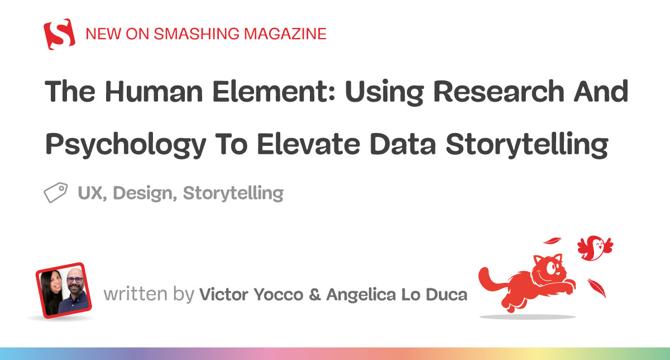Smashingmagazine
1M
31

Image Credit: Smashingmagazine
The Human Element: Using Research And Psychology To Elevate Data Storytelling
- Data storytelling combines data analysis with narrative techniques to create impactful stories that influence decisions and drive action.
- Effective data storytelling simplifies complex information, engages the audience, and advocates for user-centered improvements.
- Examples like The New York Times' Snow Fall and The Guardian's The Counted showcase the power of data storytelling in creating lasting impressions.
- Data storytelling simplifies complexity, engages and persuades, and bridges gaps by connecting information to human experience.
- Models like the hero’s journey and the Three-Act Structure provide frameworks for structuring data stories and keeping the audience engaged.
- Challenges in data storytelling include cognitive overload, emotional disconnect, and lack of personalization in storytelling.
- Improving data storytelling involves focusing on audience understanding, psychological principles, and creating engaging and persuasive narratives.
- Incorporating the Theory of Planned Behavior can help in understanding audience behavior and shaping data stories effectively.
- Crafting a balanced and persuasive narrative involves aligning data insights with the audience's needs and motivations.
- A five-step framework for data storytelling includes defining clear objectives, conducting UX research, analyzing data, applying psychological principles, and crafting a balanced narrative.
Read Full Article
1 Like
For uninterrupted reading, download the app